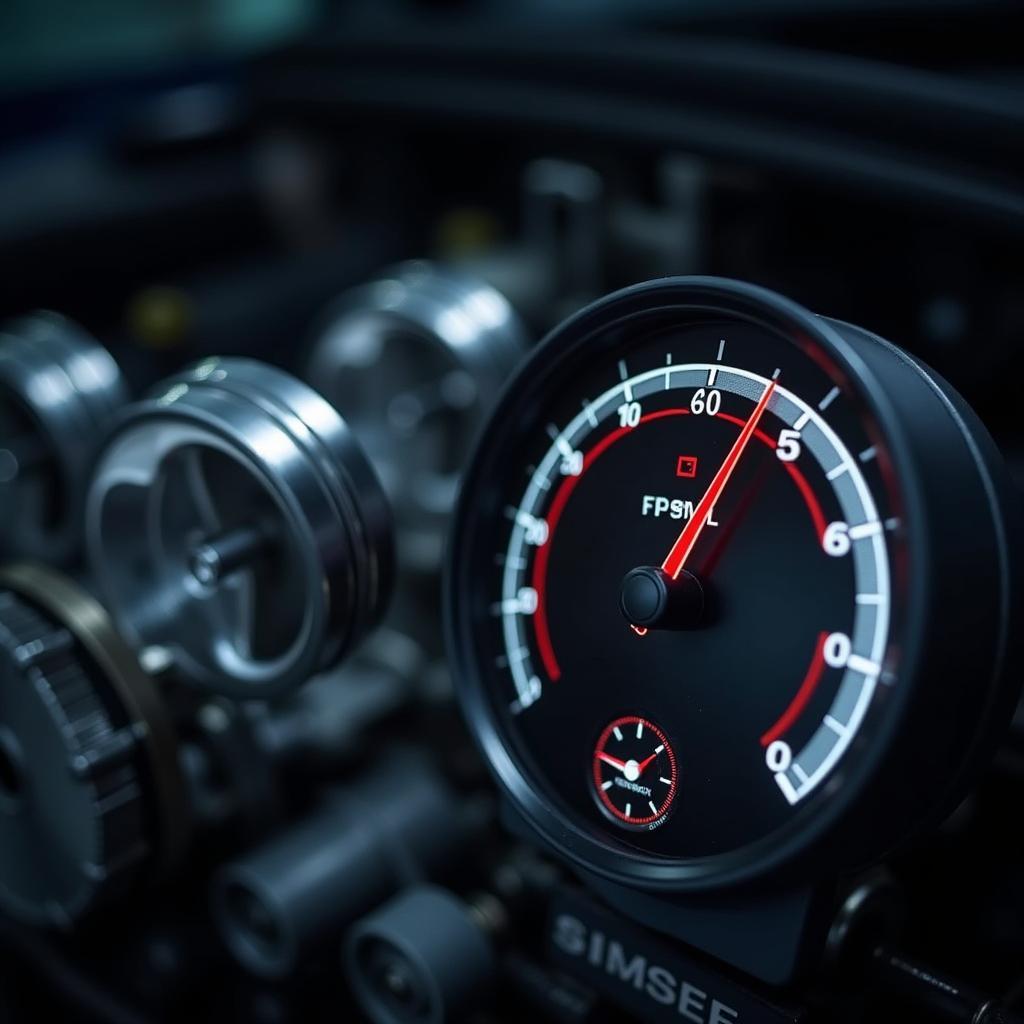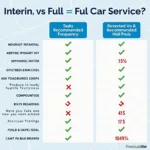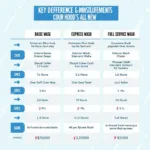The age-old question of whether to drive a new car slowly until the first service is a common one. Many new car owners wonder if babying their new vehicle is necessary or just an old wives’ tale. This article dives deep into the reasoning behind this practice, exploring the modern realities of engine manufacturing and offering practical advice for breaking in your new car.
Understanding the “Break-In” Period
The concept of a break-in period stems from older engine manufacturing techniques. Decades ago, engine components required a gentle settling-in period due to less precise manufacturing. This period allowed the moving parts to wear in together, optimizing performance and longevity. Today, engine manufacturing is significantly more advanced. Tight tolerances and improved materials minimize the need for a prolonged, restrictive break-in period.
Is “Driving Slowly” Necessary?
While the necessity of driving incredibly slowly for an extended period is debatable, following certain guidelines during the initial miles can still be beneficial. The goal is not to avoid driving altogether but to avoid extremes. This includes avoiding excessively high RPMs, heavy acceleration, and hard braking. Think of it as treating your new engine with respect, allowing it to adapt to its working environment gradually.
Modern Recommendations for New Car Owners
Most manufacturers provide specific break-in instructions in the owner’s manual. These recommendations often include avoiding towing heavy loads, maintaining consistent speeds for extended periods (avoiding cruise control initially), and varying engine speed and load. These practices allow the engine components to settle and the various lubricants to circulate effectively.
What Does the Owner’s Manual Say?
Your owner’s manual is your best friend when it comes to understanding your specific car’s needs. It offers tailored instructions directly from the manufacturer, ensuring you follow the best practices for your vehicle. Consulting this resource will provide you with the most accurate and relevant information.
Debunking the Myths
One persistent myth is the need to avoid high speeds entirely. While consistent high speeds for prolonged periods should be avoided initially, reaching highway speeds for shorter durations is generally acceptable. Varying your speed and driving conditions exposes the engine to a broader range of operating parameters, contributing to optimal performance in the long run.
What About Varying Driving Conditions?
Varying driving conditions – city driving, highway driving, uphill, and downhill – are actually beneficial during the break-in period. Exposing your engine to different loads and speeds helps it adapt and perform optimally under various circumstances.
“Varying driving conditions is like a well-rounded training program for your new engine,” says John Smith, Automotive Engineer at Advanced Automotive Solutions. “It allows the engine to develop its full potential and ensures smooth operation across a wider range of scenarios.”
The Importance of the First Service
The first service is crucial for checking vital components and ensuring everything is functioning correctly after the initial break-in period. This service typically includes an oil change, filter replacements, and a thorough inspection. This is also an opportunity to ask your mechanic any questions about your car’s performance.
Why is the First Service So Important?
The first service acts as a final check-up to ensure your new car is performing optimally. It provides an opportunity to address any minor adjustments needed after the break-in period. “Think of the first service as a graduation ceremony for your engine,” adds Sarah Jones, Senior Technician at Precision Auto Care. “It confirms that everything is running smoothly and sets the stage for years of reliable performance.”
Conclusion
While the strict “drive slowly” mantra might be outdated, adopting a sensible approach to driving a new car until its first service is still wise. Avoid extremes in speed, acceleration, and braking, and always refer to your owner’s manual for specific instructions. By following these guidelines and getting your car serviced promptly, you can set the stage for a long and enjoyable ownership experience. Should we drive a new car slowly till the 1st service? Not excessively slowly, but with sensible care.
FAQ
-
How long is the typical break-in period for a new car? It typically ranges from 500 to 1000 miles, but always refer to your owner’s manual.
-
Can I use cruise control during the break-in period? It’s generally recommended to avoid cruise control initially to allow for varied engine speeds.
-
What happens if I don’t follow the break-in recommendations? While modern engines are resilient, not following the guidelines could potentially affect long-term engine performance and longevity.
-
Is it necessary to change the oil at the first service? Yes, the first oil change is essential to remove any residual manufacturing debris.
-
Can I drive my new car on the highway during the break-in period? Yes, short durations at highway speeds are generally acceptable, but avoid prolonged, consistent high speeds.
-
What is included in the first service? Typically, it includes an oil change, filter replacements, and a comprehensive inspection.
-
When should I schedule my first service? Consult your owner’s manual for the recommended mileage or time frame.
Other Helpful Articles
- Maintaining Your New Car: A Comprehensive Guide
- Understanding Your Car’s Warranty
Need help? Contact us via WhatsApp: +1(641)206-8880, Email: [email protected]. We have a 24/7 customer support team.


